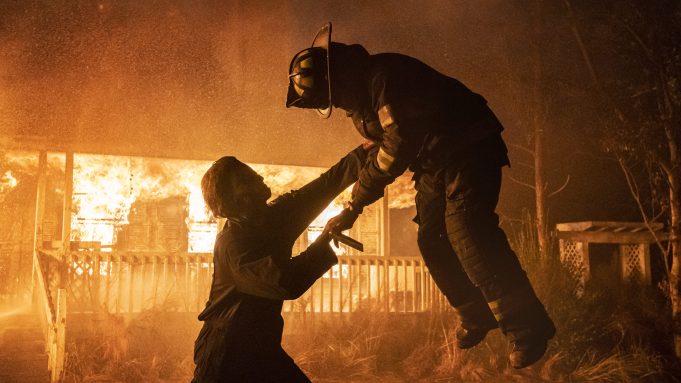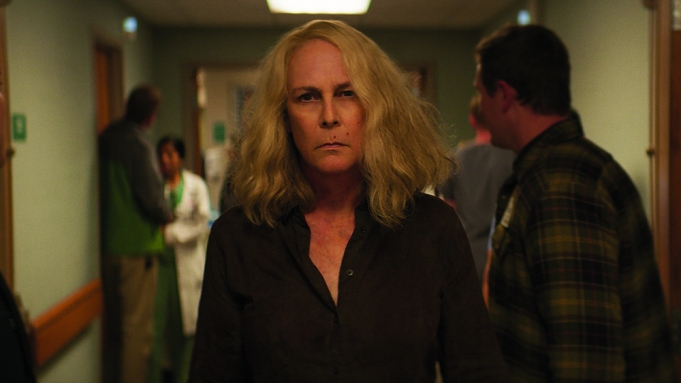There is a simple formula to suspense. William Archer said that drama and its subsidiary forms boil down to “anticipation mingled with uncertainty.” That is to say, the resolution of a scene cannot allow itself to be augured by the viewer; if the viewer can predict the outcome, it carries no tension. For example, let’s say you go to the grocery store. If you go to the grocery store, with the knowledge that you will pay for those groceries, you expect to amass groceries, exchange pleasantries and currency with the cashier, emerge with groceries, drive home, and enjoy the rest of your life. No drama. If, however, you go to the grocery store, with the knowledge that you will not pay for the goods–if you engage in the act of shoplifting–you have now created for yourself a mini-drama. You cannot predict whether you will be caught, or whether you will prevail over that interminable siren triggered by the soul-reading steel bar staring down the exit. You run the risk of encountering complications—anticipation mingled with uncertainty. HALLOWEEN KILLS, David Gordon Green’s follow-up to his 2018 soft-reboot of John Carpenter’s 1978 classic, is as banal an experience as unfelonious grocery shopping.

HALLOWEEN KILLS, besides failing as a narrative, fails somehow even more spectacularly on a visual level. Gordon Green launches scenes with reverse closeups of two characters sitting and talking, often forgoing establishing shots— this does not register as a deliberate decision to disorient the viewer, but more like a basic misapprehension of how a movie scene works. A big dramatic development in a hospital, as stretchers lined with Michael Myers’s victims flood the entrance, is that a sanatorium patient has escaped; in hunting Meyers, the town people mistake him for Michael Myers and try to kill him. I looked it up and it turns out this character was in the 2018 Halloween, as a guy who escaped from the mental hospital. Gordon Green inundates the movie with flashbacks–newly fabricated ones to a cop trying to shoot Michael Myers but missing, a little kid being taunted, etc.–but does not provide a flashback, or even exposition for this mental patient. HALLOWEEN came out three years ago, so it’s not a situation where this character is fresh in your memory. He’s just there, and there’s a mob that mistakes him for Myers through some temporo-spatial construction that’s as ineffable as a Tarsem Singh movie.
The greater problem is this: Michael Myers has become invincible. Making glistening appearances throughout HALLOWEEN KILLS are frantically-grasped kitchen knives and conveniently placed pitchforks and buckshots, each as they penetrate Myers’s dun jumpsuit. On rare occasions, they temporarily incapacitate him, but most of the time it’s the futility of emasculated beat cops unloading .22’s at Godzilla. I cannot for the life of me (the life of mine for which I was convinced HALLOWEEN KILLS was not worth all the heartache, at least while I was forced to bear its protracted 105-minute runtime) understand the decision to suddenly make this character, whose intellectual and physical limitations are well known to general audiences, a literal Bogeyman who cannot be stopped.

Michael Myers shows up, people try to kill him, then he kills them. There is a sequence where a couple, who now currently occupies the eerie Cape Cod where notorious serial killer Michael Myers grew up (hey, with the housing market being like it is right now, who can blame the beggars for choosing poorly?) become aware that the place’s former tenant has staged a homecoming. They stalk through the house, on divergent trails (you know, what you would do in a home invasion situation when you’ve lucked out enough to have backup) with knives. Meyers peels out from behind the jamb and gouges out the one guy’s eyes, then stabs the other guy’s throat. There’s not even, like, an altercation, they just get X’d. I’m short of exaggeration when I say that every murder scene in HALLOWEEN follows this formula, a formula antithetical to suspense. KILLS shreds thousands of years of ingrained wisdom about drama & suspense and devises its own theorem, which the viewer quickly becomes accustomed to: “yeah, okay.”
Slashers do not ask that you register the villain’s victims as real humans, or implore you to even care about them in any meaningful sense, but the dramatic current which runs through the genre is the chance, the possibility, of triumph over evil. The existence of that possibility fuels the viewer’s investment in the story, as invariably there is some transient identification with the hapless camp counselor, or wasted sorority girl, or what-have-you, on just a primal level. There’s no chance of escape in HALLOWEEN KILLS. To be fair, that defeatism could certainly make for its own terror. The best horror films (CARRIE, THE HAUNTING, RINGU) are rooted in essentially unwinnable scenarios, but these films only reveal in their final moments that the characters’ stupendous attempts at survival have been in vain. They don’t remind you with every passing scene how stupid you are for thinking there’s an escape in the first place. If you were looking for even a morsel of adrenaline by watching the new HALLOWEEN, don’t bother. You’d be much better off just shoplifting.
















Comments